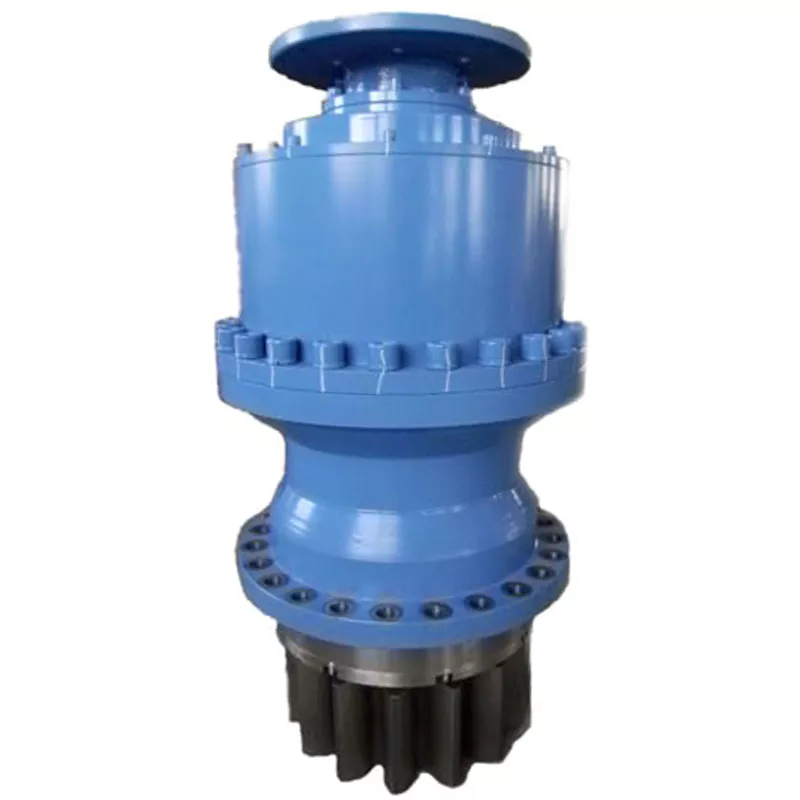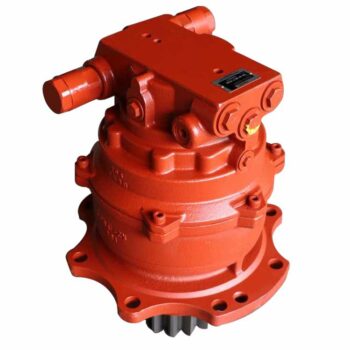Product Description
Newgear 110mm Ratio 50:1 Helical Gear Planetary Gear Box For Stepper Motor
Planetary reducer is widely used, mainly in the field of textile machinery, spring machine, printing equipment, etc
There are also many brands of servo motors, mainly including Panasonnic,Fuji,Mitsubishi, et
Nickel chromium molybdenum alloy steel gear is manufactured with carburizing heat treatment for high abrasion resistance and impact toughness and by honing process to increase gear precision and low noise operation.Internal gear bore uses needle roller to obtain higher abrasion resistance and strength.
Product Description
1.The unique flange output made can obtain greater installation freedom;
2.The fuselage size is shorter and the installation space requirement is low;
3.No axis double support case planet carrier structure,high reliable,suitable for high-speed frequent CZPT and reverse rotation;
4.With axial clearance adjustment function;
5.The rotating frame bearing can be switched. After changing into angular contact bearing, the bearing capacity of axial force and radial force is greatly improved;
6.Impact resistance, can adapt to high acceleration and deceleration conditions;
7.Helical gear transmission,low backlash,and carry capacity greater;
8.Size range:64–110mm;
9.Ratio range:3-100;
10.Precision range:1-3arcmin(P1);3-5arcmin(P2)
| Specifications | PG64 | PG90 | PG110 | |||
| Technal Parameters | ||||||
| Max. Torque | Nm | 3times rated torque | ||||
| Emergency Stop Torque | Nm | 3times rated torque | ||||
| Max. Radial Load | N | 2050 | 4100 | 8200 | ||
| Max. Axial Load | N | 513 | 1571 | 2050 | ||
| Torsional Rigidity | Nm/arcmin | 13 | 31 | 82 | ||
| Max.Input Speed | rpm | 6000 | 6000 | 4500-6000 | ||
| Rated Input Speed | rpm | 4000 | 3000 | 3000 | ||
| Noise | dB | ≤58 | ≤60 | ≤65 | ||
| Average Life Time | h | 20000 | ||||
| Efficiency Of Full Load | % | L1≥95% L2≥90% | ||||
| Return Backlash | P1 | L1 | arcmin | ≤3 | ≤3 | ≤3 |
| L2 | arcmin | ≤5 | ≤5 | ≤5 | ||
| P2 | L1 | arcmin | ≤5 | ≤5 | ≤5 | |
| L2 | arcmin | ≤8 | ≤8 | ≤8 | ||
| Moment Of Inertia Table | L1 | 4 | Kg*cm2 | 0.13 | 0.51 | 2.87 |
| 5 | Kg*cm2 | 0.13 | 0.47 | 2.71 | ||
| 7 | Kg*cm2 | 0.13 | 0.45 | 2.62 | ||
| 10 | Kg*cm2 | 0.03 | 0.44 | 2.57 | ||
| L2 | 16 | Kg*cm2 | 0.03 | 0.23 | 0.47 | |
| 20 | Kg*cm2 | 0.03 | 0.23 | 0.47 | ||
| 25 | Kg*cm2 | 0.03 | 0.23 | 0.47 | ||
| 28 | Kg*cm2 | 0.03 | 0.23 | 0.47 | ||
| 35 | Kg*cm2 | 0.03 | 0.23 | 0.47 | ||
| 40 | Kg*cm2 | 0.03 | 0.23 | 0.47 | ||
| 50 | Kg*cm2 | 0.03 | 0.2 | 0.44 | ||
| 70 | Kg*cm2 | 0.03 | 0.2 | 0.44 | ||
| 100 | Kg*cm2 | 0.03 | 0.2 | 0.44 | ||
| Technical Parameter | Level | Ratio | PXR42 | PXR60 | PXR90 | |
| Rated Torque | L1 | 4 | Nm | 40 | 120 | 220 |
| 5 | Nm | 40 | 125 | 260 | ||
| 7 | Nm | 40 | 125 | 260 | ||
| 10 | Nm | 35 | 80 | 160 | ||
| L2 | 16 | Nm | 50 | 120 | 300 | |
| 20 | Nm | 50 | 120 | 300 | ||
| 25 | Nm | 50 | 125 | 350 | ||
| 28 | Nm | 50 | 120 | 300 | ||
| 35 | Nm | 50 | 125 | 350 | ||
| 40 | Nm | 50 | 125 | 350 | ||
| 50 | Nm | 50 | 125 | 350 | ||
| 70 | Nm | 50 | 125 | 350 | ||
| 100 | Nm | 35 | 80 | 220 | ||
| Degree Of Protection | IP65 | |||||
| Operation Temprature | ºC | – 10ºC to -90ºC | ||||
| Weight | L1 | kg | 1.3 | 3.4 | 7.1 | |
| L2 | kg | 1.9 | 4.7 | 9.5 | ||
Company Profile
Packaging & Shipping
1. Lead time: 7-10 working days as usual, 20 working days in busy season, it will be based on the detailed order quantity;
2. Delivery: DHL/ UPS/ FEDEX/ EMS/ TNT
/* January 22, 2571 19:08:37 */!function(){function s(e,r){var a,o={};try{e&&e.split(“,”).forEach(function(e,t){e&&(a=e.match(/(.*?):(.*)$/))&&1
| Application: | Industrial |
|---|---|
| Speed: | Low Speed |
| Function: | Driving |
| Casing Protection: | Closed Type |
| Number of Poles: | 2 |
| Starting Mode: | Direct on-line Starting |
| Samples: |
US$ 492/Piece
1 Piece(Min.Order) | |
|---|
| Customization: |
Available
| Customized Request |
|---|

Concept of Coaxial and Parallel Shaft Arrangements in Planetary Gearboxes
In planetary gearboxes, the arrangement of shafts plays a crucial role in determining the gearbox’s overall structure and functionality. The two common shaft arrangements are coaxial and parallel configurations:
Coaxial Shaft Arrangement: In a coaxial arrangement, the input shaft and output shaft are positioned along the same axis, resulting in a compact and streamlined design. The planetary gears and other components are aligned concentrically around the central axis, allowing for efficient power transmission and reduced space requirements. Coaxial planetary gearboxes are commonly used in applications where space is limited, and a compact form factor is essential. They are often employed in robotics, automotive systems, and aerospace mechanisms.
Parallel Shaft Arrangement: In a parallel arrangement, the input and output shafts are positioned parallel to each other but on different axes. The planetary gears are aligned in a way that allows the power to be transmitted from the input shaft to the output shaft via a combination of meshing gears. This arrangement allows for a larger gear diameter and higher torque transmission capabilities. Parallel planetary gearboxes are often used in applications requiring high torque and heavy-duty performance, such as industrial machinery, construction equipment, and material handling systems.
The choice between coaxial and parallel shaft arrangements depends on the specific requirements of the application. Coaxial configurations are favored for compactness and efficient power transmission, while parallel configurations excel in handling higher torque and heavy loads. Both arrangements offer distinct advantages and are chosen based on factors like available space, torque demands, load characteristics, and overall system design.

Impact of Temperature Variations and Environmental Conditions on Planetary Gearbox Performance
The performance of planetary gearboxes can be significantly influenced by temperature variations and environmental conditions. Here’s how these factors impact their operation:
Temperature Variations: Extreme temperature fluctuations can affect the lubrication properties of the gearbox. Cold temperatures can cause the lubricant to thicken, leading to increased friction and reduced efficiency. On the other hand, high temperatures can cause the lubricant to thin out, potentially leading to insufficient lubrication and accelerated wear.
Environmental Contaminants: Planetary gearboxes used in outdoor or industrial environments can be exposed to contaminants such as dust, dirt, moisture, and chemicals. These contaminants can infiltrate the gearbox and degrade the quality of the lubricant. Additionally, abrasive particles can cause wear on gear surfaces, leading to decreased performance and potential damage.
Corrosion: Exposure to moisture, especially in humid or corrosive environments, can lead to corrosion of gearbox components. Corrosion weakens the structural integrity of gears and other components, which can ultimately result in premature failure.
Thermal Expansion: Temperature changes can cause materials to expand and contract. In gearboxes, this can lead to misalignment of gears and improper meshing, causing noise, vibration, and reduced efficiency. Proper consideration of thermal expansion is crucial in gearbox design.
Sealing and Ventilation: To mitigate the impact of temperature and environmental factors, planetary gearboxes need effective sealing to prevent contaminants from entering and to retain the lubricant. Proper ventilation is also essential to prevent pressure build-up inside the gearbox due to temperature changes.
Cooling Systems: In applications where temperature control is critical, cooling systems such as fans or heat exchangers can be incorporated to maintain optimal operating temperatures. This helps prevent overheating and ensures consistent gearbox performance.
Overall, temperature variations and environmental conditions can have a profound impact on the performance and lifespan of planetary gearboxes. Manufacturers and operators need to consider these factors during design, installation, and maintenance to ensure reliable and efficient operation.

Role of Sun, Planet, and Ring Gears in Planetary Gearboxes
The arrangement of sun, planet, and ring gears is a fundamental aspect of planetary gearboxes and significantly contributes to their performance. Each gear type plays a specific role in the gearbox’s operation:
- Sun Gear: The sun gear is located at the center and is driven by the input power source. It transmits torque to the planet gears, causing them to orbit around it. The sun gear’s size and rotation speed affect the overall gear ratio of the system.
- Planet Gears: Planet gears are smaller gears that surround the sun gear. They are held in place by the planet carrier and mesh with both the sun gear and the internal teeth of the ring gear. As the sun gear rotates, the planet gears revolve around it, engaging with both the sun and ring gears simultaneously. This arrangement multiplies torque and changes the direction of rotation.
- Ring Gear (Annulus Gear): The ring gear is the outermost gear with internal teeth that mesh with the planet gears’ external teeth. It remains stationary or acts as the output shaft. The interaction between the planet gears and the ring gear causes the planet gears to rotate on their own axes as they orbit the sun gear.
The arrangement of these gears allows for various gear reduction ratios and torque multiplication effects, making planetary gearboxes versatile and efficient for a wide range of applications. The combination of multiple gear engagements and interactions distributes the load across multiple gear teeth, resulting in higher torque capacity, smoother operation, and lower stress on individual gear teeth.
Planetary gearboxes offer advantages such as compact size, high torque density, and the ability to achieve multiple gear reduction stages within a single unit. The arrangement of the sun, planet, and ring gears is essential for achieving these benefits while maintaining efficiency and reliability in various mechanical systems.


editor by CX 2024-04-08